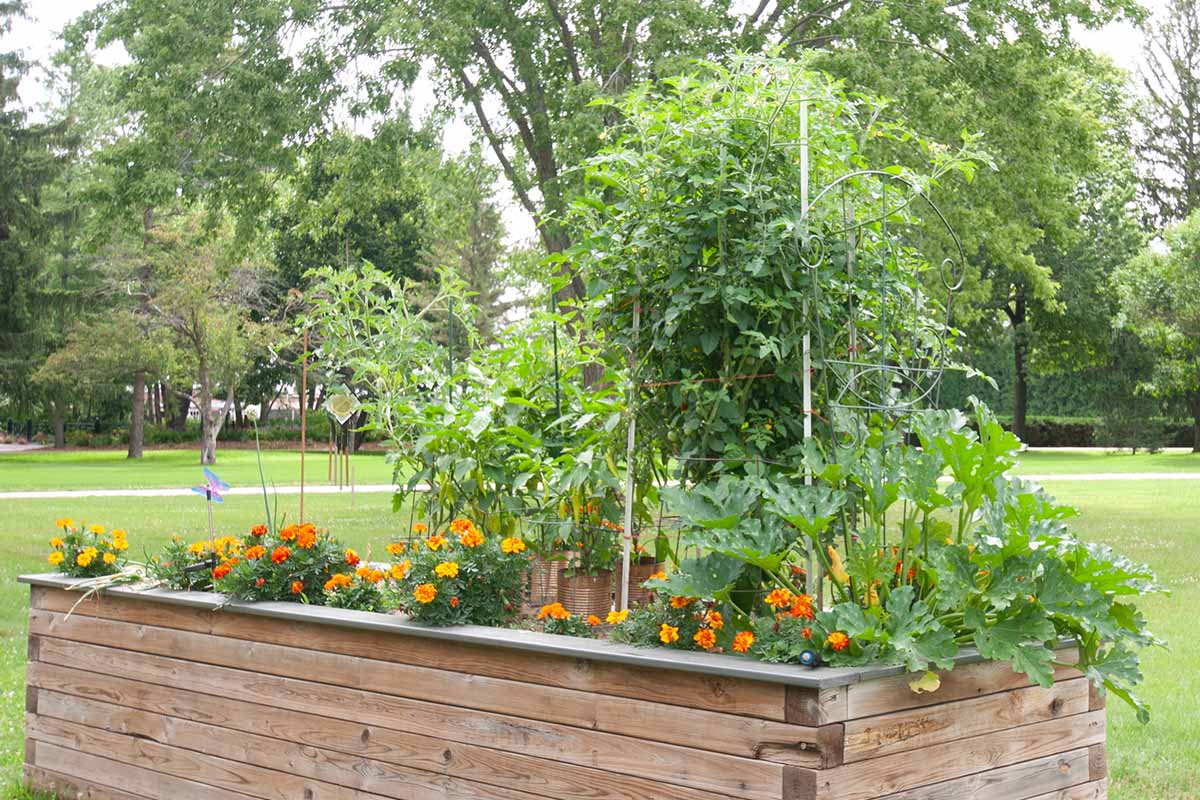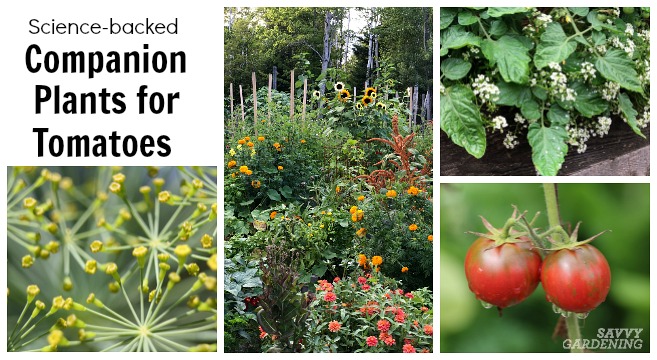The Ultimate Guide To Companion Planting With Tomatoes
The Ultimate Guide to Companion Planting with Tomatoes
Tomatoes are a popular vegetable to grow in gardens, but they can be susceptible to pests and diseases. Companion planting is a great way to help protect your tomatoes from these problems and improve their overall health.
In this guide, we will discuss the benefits of companion planting with tomatoes, as well as some of the best companion plants for tomatoes. We will also provide some tips on how to plant and care for your companion plants.
Benefits of Companion Planting with Tomatoes
There are many benefits to companion planting with tomatoes. Some of the benefits include:
- Reducing pest and disease problems. Many companion plants have natural pest-repelling properties. For example, basil can help to deter aphids and flies, while marigolds can help to repel nematodes.
- Attracting beneficial insects. Some companion plants attract beneficial insects, such as ladybugs and bees. These insects can help to control pests and pollinate your tomatoes.
- Improving soil health. Some companion plants can help to improve soil health by adding nutrients or aerating the soil. This can help your tomatoes to grow healthier and more productive.
- Efficient use of space. Companion planting can help you to efficiently use your garden space. For example, you can plant tall companion plants, such as sunflowers, to provide shade for your tomatoes.
Best Companion Plants for Tomatoes
Some of the best companion plants for tomatoes include:
- Basil: Basil is a classic companion plant for tomatoes. It has a strong scent that helps to deter pests, and it also enhances the flavor of tomatoes.
- Marigolds: Marigolds are another great companion plant for tomatoes. They help to repel nematodes, which can damage tomato roots.

- Nasturtiums: Nasturtiums are a beautiful and beneficial companion plant for tomatoes. They help to attract beneficial insects, and they also deter pests.
- Borage: Borage is a flowering herb that is a good companion plant for tomatoes. It attracts pollinators, and it also helps to improve soil health.
- Chives: Chives are a versatile herb that can be used in cooking or as a companion plant. They help to repel aphids and other pests.
- Parsley: Parsley is a good companion plant for tomatoes because it helps to attract beneficial insects. It also helps to improve soil health.
- Garlic: Garlic is a strong-scented herb that helps to repel pests. It can also help to improve soil health.
How to Plant and Care for Companion Plants
When planting companion plants with tomatoes, it is important to choose plants that have similar growing requirements. For example, all of the plants listed above prefer full sun and well-drained soil.
You should also plant your companion plants at the same time as your tomatoes. This will help them to establish themselves before the tomatoes start to grow.
Once your companion plants are established, you will need to care for them just like you would any other plant in your garden. This includes watering, fertilizing, and weeding.
Conclusion
Companion planting is a great way to help protect your tomatoes from pests and diseases, improve their overall health, and efficiently use your garden space. By following the tips in this guide, you can easily plant and care for companion plants with your tomatoes.
Tomatoes and companion plants
Tomatoes are a delicious and versatile vegetable that can be grown in many different climates. But did you know that there are some plants that can help your tomatoes grow even better? These are called companion plants, and they can offer a variety of benefits, such as attracting beneficial insects, deterring pests, and improving soil health.
Some of the best companion plants for tomatoes include:
- Basil: Basil is a classic companion plant for tomatoes, and for good reason. It not only tastes great with tomatoes, but it also helps to repel pests like aphids and tomato hornworms.
- Marigolds: Marigolds have a strong scent that deters many pests, including nematodes, whiteflies, and thrips. They also help to attract beneficial insects, such as ladybugs and lacewings.
- Garlic: Garlic is another great insect repellent, and it can also help to improve soil health.
- Chives: Chives are similar to garlic in their pest-repellent properties, and they also add a delicious flavor to tomato dishes.
- Borage: Borage is a flowering plant that attracts pollinators, such as bees and butterflies. It also helps to improve soil drainage.
If you're looking to grow healthy and productive tomatoes, consider planting some companion plants alongside them. You'll be glad you did!
For more information about companion crops for tomatoes, please visit Garden Wiki.
FAQ of companion crops for tomatoes
Question 1: What are companion crops for tomatoes?
Answer: Companion crops are plants that are grown together for their mutual benefit. They can help to attract beneficial insects, repel pests, improve soil fertility, and provide shade or support. Some good companion crops for tomatoes include:
- Basil: Basil repels pests such as thrips, whiteflies, and mosquitoes. It also helps to improve the flavor of tomatoes.
- Marigolds: Marigolds repel nematodes, which are soil-dwelling pests that can damage tomato roots. They also attract beneficial insects such as ladybugs and lacewings.
- Chives: Chives repel aphids, spider mites, and other pests. They also help to improve the flavor of tomatoes.
- Lettuce: Lettuce helps to suppress weeds and improve soil aeration. It also provides shade for young tomato plants.
- Beans: Beans fix nitrogen in the soil, which can benefit tomatoes. They also help to prevent soil erosion.
Question 2: What are some companion crops that should be avoided for tomatoes?
Answer: Some companion crops that should be avoided for tomatoes include:
- Corn: Corn and tomatoes are both susceptible to the corn earworm, so it is best to avoid planting them together.
- Potatoes: Tomatoes and potatoes are both susceptible to the same blight, so it is best to avoid planting them together.
- Cabbage: Cabbage can attract pests that also target tomatoes, such as aphids and whiteflies.
- Fennel: Fennel can stunt the growth of tomato plants.
- Dill: Dill can attract pests that also target tomatoes, such as spider mites.
Question 3: How far apart should companion crops be planted?
Answer: The distance between companion crops will vary depending on the size of the plants. In general, you should space companion crops at least 12 inches apart. This will give them enough room to grow and thrive.
Question 4: What are the benefits of companion planting with tomatoes?
Answer: There are many benefits to companion planting with tomatoes, including:
- Increased yields: Companion plants can help to attract beneficial insects, which can pollinate tomato flowers and increase yields.
- Improved flavor: Some companion plants, such as basil, can help to improve the flavor of tomatoes.
- Disease and pest control: Companion plants can help to repel pests and diseases that can damage tomato plants.
- Improved soil health: Companion plants can help to improve soil fertility and aeration.
Question 5: How do I choose the right companion crops for my tomatoes?
Answer: When choosing companion crops for your tomatoes, there are a few things to keep in mind:
- The size of the plants: Make sure that the companion crops you choose are compatible with the size of your tomato plants.
- The needs of the plants: Consider the sunlight, water, and soil requirements of the companion crops you choose.
- The pests and diseases that affect your area: Choose companion crops that can help to repel or control pests and diseases that are common in your area.
Image of companion crops for tomatoes
- Basil: Basil is a classic companion plant for tomatoes. It helps to repel pests like aphids and tomato hornworms.
- Cucumbers: Cucumbers and tomatoes are both members of the Cucurbitaceae family, so they benefit from being planted together. They help to shade each other from the sun, which can help to prevent blossom end rot in tomatoes.
- Marigolds: Marigolds are another great companion plant for tomatoes. They help to repel nematodes, which are soil-dwelling pests that can damage tomato roots.
- Onions: Onions and tomatoes can help to deter each other's pests. Onions repel thrips, which can damage tomato leaves, while tomatoes repel tomato hornworms, which can eat tomato fruits.
- Spinach: Spinach is a good companion plant for tomatoes because it helps to suppress weeds. It also doesn't compete with tomatoes for water or nutrients.

Post a Comment for "The Ultimate Guide To Companion Planting With Tomatoes"